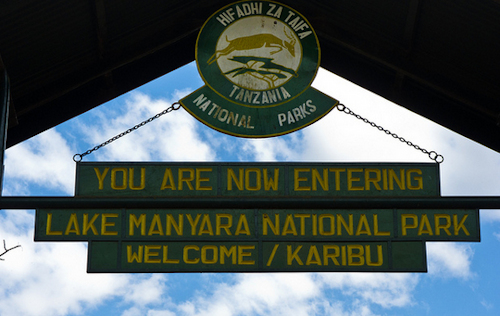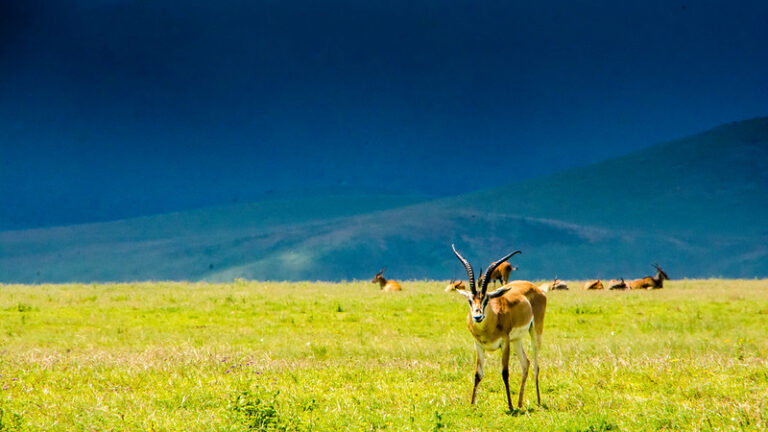SELF DRIVE SAFARI IN TANZANIA: ROUTES, TIPS, AND ESSENTIAL INFORMATION
A self-drive safari in Tanzania offers an exciting opportunity to explore one of Africa’s most stunning and wildlife-rich countries at your own pace. With vast landscapes ranging from the iconic Serengeti to the Ngorongoro Crater, Tanzania provides an unforgettable safari experience. Self-driving allows you to venture into remote areas, enjoy the freedom to stop whenever you wish, and discover hidden gems without being tied to a set schedule. Whether you are seeking the thrill of game drives in the Serengeti or the serenity of the unique landscapes in the Selous, Tanzania’s well-maintained roads and diverse national parks make it an ideal destination for an adventurous road trip.
This guide will give you everything you need to know, including the best routes, useful tips, and important information.

Why Choose a Self-Drive Safari in Tanzania?
- Freedom and Flexibility: A self-drive safari in Tanzania gives you the freedom to explore at your own pace. You can decide when to leave, where to go, and how long to stay in each park. It’s perfect for those who want an independent adventure without being restricted by a group tour.
- Cost-Effective: Self-driving can save you money by eliminating the need for a guide or driver. You only pay for your rental vehicle, park entry fees, and accommodation, which makes it an affordable option, especially for families or groups.
- Personalized Experience: With a self-drive safari, you can customize your trip according to your interests. You have the flexibility to choose which parks to visit, avoid tourist crowds, and explore more off-the-beaten-path locations.
- Adventure and Exploration: Driving yourself through Tanzania’s national parks adds an exciting sense of adventure. You’ll enjoy the thrill of navigating the wilderness, spotting animals on your own, and experiencing the beauty of the country’s landscapes firsthand.
- Access to Remote Areas: Many of Tanzania’s national parks, like the Serengeti and Ruinsori, have areas that are less accessible by public transport. With a 4×4 vehicle, you can reach remote spots and enjoy a truly off-the-grid experience, perfect for those seeking peace and solitude.
- Connection with Nature: Being in control of your own vehicle allows you to connect more deeply with nature. You can stop and enjoy the surroundings, observe wildlife for as long as you want, and embrace the peacefulness of the parks without distractions.
- Convenience: Self-driving offers convenience by allowing you to move between different parks and accommodations at your own pace. You don’t need to wait for group transport or follow a fixed itinerary, making it easier to explore multiple destinations in Tanzania.
Best Self-Drive Safari Routes in Tanzania
Tanzania offers a variety of safari routes depending on what you want to experience. Here are some of the best routes for a self-drive safari:
- Northern Circuit (Most Popular and Well-Developed)
This route is the most popular and well-established in Tanzania. It includes some of the country’s most famous national parks and is perfect for those who want to see a variety of landscapes and wildlife.
- Route: Arusha – Tarangire – Lake Manyara – Ngorongoro Crater – Serengeti – Arusha
- Highlights:
- Tarangire National Park: Famous for its large elephant herds and iconic baobab trees.
- Lake Manyara National Park: Known for its tree-climbing lions and large flocks of flamingos.
- Ngorongoro Crater: A UNESCO World Heritage site, home to a wide variety of wildlife in a unique volcanic caldera.
- Serengeti National Park: One of the most famous wildlife destinations in the world, known for its vast plains and the Great Migration.
- Distance & Time:
- Arusha to Tarangire: 2 hours
- Tarangire to Lake Manyara: 1.5–2 hours
- Lake Manyara to Ngorongoro Crater: 2–3 hours
- Ngorongoro Crater to Serengeti: 3–4 hours
- Serengeti to Arusha: 5–6 hours
- Southern Circuit (More Remote and Less Crowded)
If you want a quieter, less crowded safari experience, the Southern Circuit is perfect. This route takes you to some of Tanzania’s best-kept secrets, offering a chance to see incredible wildlife in more peaceful, remote settings.
- Route: Dar es Salaam – Nyerere National Park (Selous) – Mikumi National Park – Ruaha National Park – Dar es Salaam
- Highlights:
- Nyerere National Park (formerly Selous): One of the largest game reserves in Africa, home to elephants, lions, and wild dogs.
- Mikumi National Park: Known for its large herds of elephants, buffalo, and giraffes.
- Ruaha National Park: A remote and less-visited park, offering fantastic wildlife viewing, especially for predators.
- Distance & Time:
- Dar es Salaam to Nyerere: 4–5 hours
- Nyerere to Mikumi: 4 hours
- Mikumi to Ruaha: 3–4 hours
- Ruaha to Dar es Salaam: 6–7 hours
- Western Tanzania (For the Ultimate Adventure)
This route is for those looking for a true adventure in Tanzania’s less-explored regions. The Western Tanzania route takes you to parks where few tourists go, offering unique wildlife experiences.
- Route: Kigoma – Mahale Mountains – Katavi – Kigoma
- Highlights:
- Mahale Mountains National Park: Famous for chimpanzee trekking and beautiful landscapes with clear lakes.
- Katavi National Park: One of Tanzania’s most remote parks, known for its large populations of elephants and lions.
- Distance & Time:
- Kigoma to Mahale Mountains: 3–4 hours by boat
- Mahale to Katavi: 4–5 hours
- Katavi to Kigoma: 4–5 hours
- Coastal and Island Exploration
If you want to combine a safari with some beach time, this route is perfect. It takes you from Dar es Salaam through Saadani National Park and along the coast to Zanzibar.
- Route: Dar es Salaam – Saadani National Park – Pangani – Tanga – Zanzibar (via ferry)
- Highlights:
- Saadani National Park: A unique park on the coast, where you can see both wildlife and the Indian Ocean.
- Pangani and Tanga: Coastal towns known for their relaxed atmosphere and beautiful beaches.
- Zanzibar: An island paradise with stunning beaches and rich history.
- Distance & Time:
- Dar es Salaam to Saadani: 2–3 hours
- Saadani to Pangani: 1.5–2 hours
- Pangani to Tanga: 1 hour
- Tanga to Zanzibar (via ferry): 2 hours
Essential Tips for a Self-Drive Safari in Tanzania
Here are some important tips to make your self-drive safari in Tanzania as smooth and enjoyable as possible:
- Rent a 4×4 Vehicle
Tanzania’s national parks, especially the remote ones, often have rugged roads that can be challenging to drive on without a 4×4 vehicle. Renting a 4×4 with high ground clearance is essential for navigating these roads, particularly during the rainy season.
- Plan Your Route and Accommodation
Make sure to plan your route in advance, including where you will stay. Many parks have campsites and lodges, but accommodation can fill up quickly, especially during peak seasons. Booking in advance will ensure that you have a place to stay and avoid any last-minute stress.
- Know the Park Fees
Each national park in Tanzania has its own entrance fees, which are usually paid in cash at the park gates. Be sure to check the fees in advance and have enough cash on hand. Most parks also charge extra for vehicles, so be prepared for those costs as well.
- Bring Sufficient Fuel and Supplies
Fuel stations can be few and far between, especially in remote areas. Make sure you have enough fuel to reach your destination and carry extra fuel just in case. You should also bring basic supplies like water, snacks, and a first-aid kit.
- Be Aware of Wildlife Safety
While driving through Tanzania’s parks, always stay inside your vehicle, especially when animals are nearby. Some animals, like elephants and lions, can be dangerous if approached too closely. It’s best to keep a safe distance and follow any park rules for safety.
- Have a Good Map or GPS
While the main roads in Tanzania are usually well-marked, smaller roads or paths in parks might not be. Having a good map or GPS system is important to navigate the parks and avoid getting lost. Many car rental companies provide GPS systems with preloaded maps.
- Be Prepared for the Weather
Tanzania can be very hot, especially in the parks, so be sure to pack light, breathable clothing and sunscreen. If you are traveling during the rainy season (March to May), you may encounter muddy roads and unpredictable weather. It’s a good idea to bring a rain jacket and waterproof gear.
- Respect Local Communities
Tanzania is home to many diverse communities, including Maasai and Hadzabe people. When passing through local villages, always be respectful and ask for permission before taking photos of people. Also, avoid giving out gifts to children, as it can encourage begging.
- Emergency Numbers
In case of an emergency, it’s helpful to know local emergency numbers:
- Police: 999
- Park Rangers: Available at each park’s entrance
Conclusion
A self-drive safari in Tanzania offers the perfect blend of adventure, freedom, and wildlife exploration. With well-developed routes like the Northern Circuit, quieter gems in the Southern Circuit, and the ultimate adventure in Western Tanzania, there’s something for every kind of traveller. Whether you seek popular wildlife hotspots, remote parks with fewer tourists, or an unforgettable experience with chimpanzees, a self-drive safari gives you the flexibility to tailor your journey. A self-drive safari in Tanzania allows you to connect with the wild in a more personal and rewarding way, making it one of the best ways to explore this incredible country.




